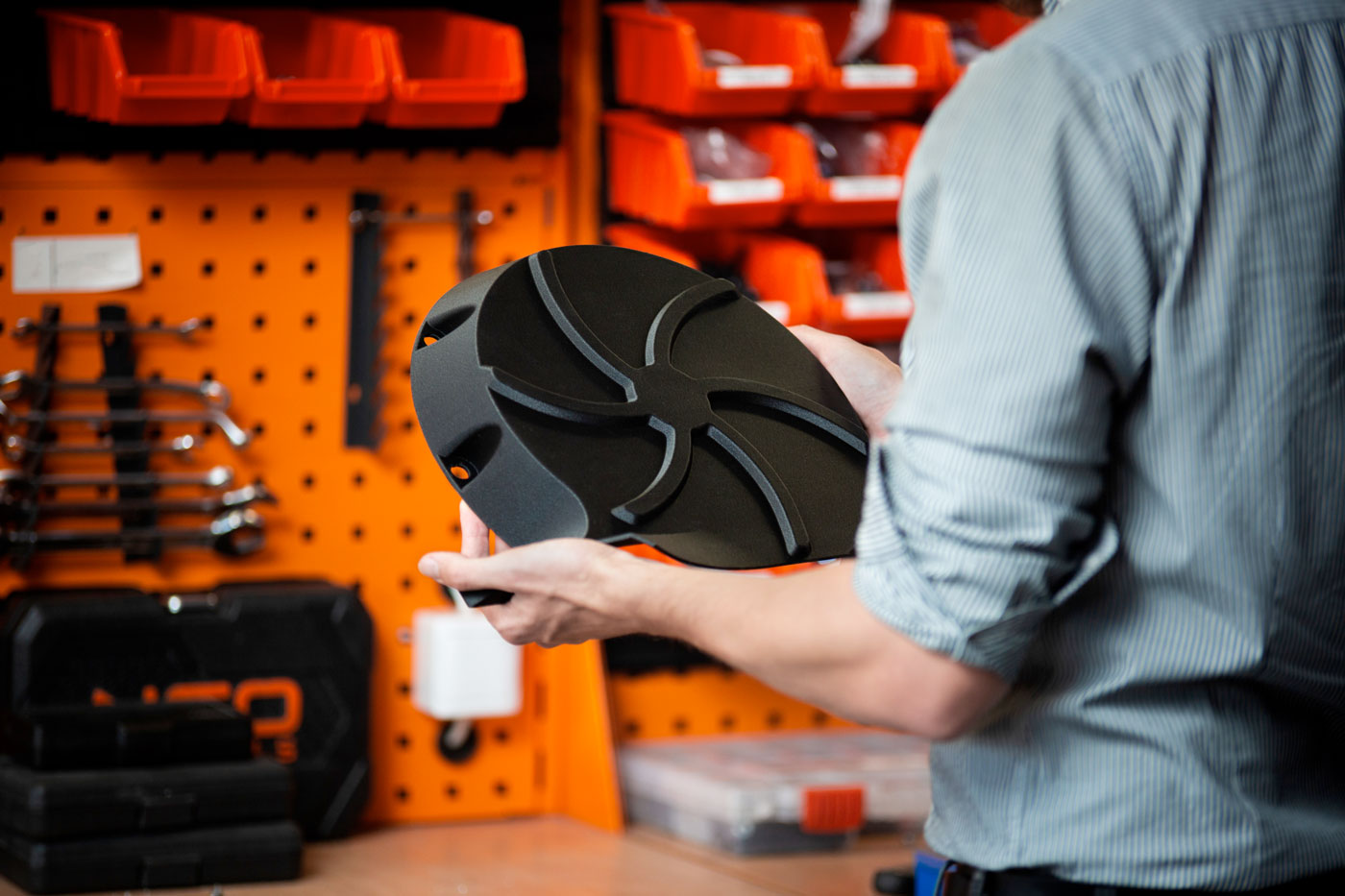BASF is one of the biggest players in the chemical industry and now its tried-and-true Ultrafuse filaments are available for Zortrax M300 Dual. The first one is called Ultrafuse PP GF30 and con-sists of polypropylene reinforced with 30% addition of glass fiber. The second is Ultrafuse PAHT CF15, a polyamide reinforced with 15% of carbon fiber. The PP GF30 has been widely used in automotive industry for years. A quick glance under the hood of pretty much any modern car, and this material can be found there. The PAHT CF15 is even stronger and more resistant to high temperatures, so it can be used in advanced robotics and aerospace applications as well.
BASF Ultrafuse PP GF30 and PAHT CF15 are heavily used in the automotive industry for a wide range of components. Using these materials for structural and semi-structural parts instead of a more traditional aluminum generates significant weight and cost savings. For this reason, various automotive OEMs choose to go for PP GF30 and PAHT CF15 when building tailgates or lift-gates, instrument panel carriers, mirror brackets, engine covers, door module assemblies, active grille shutters, and more.
“Using plastic instead of metal alloys in all those applications grants more design freedom to engineers who can achieve optimal shapes and geometries. Weight savings are also crucial, es-pecially with the recent rise of electric vehicles where relatively heavy batteries need to be com-pensated for by making other components lighter to increase range. All these considerations contribute to growing popularity of polymeric materials in automotive industry. In response to this growing demand, we have partnered with BASF to make their renowned Ultrafuse PP GF30 and PAHT CF15 filaments available on our Zortrax M300 Dual 3D printer.” – says Michał Sie-maszko, Head of Research and Development at Zortrax S.A.
Glass fiber addition makes models 3D printed with Ultrafuse PP GF30 exceptionally stiff. This is particularly important in parts used in automotive interiors. A part that does not give in and deform under stress does not generate creaking noises. Moreover, the material retains this high stiffness in a wide range of temperatures. The heat deflection temperature of Ultrafuse PP GF30 is 73 °C at 1.8 MPa and over 127 °C at 0.45 MPa. This corresponds neatly with the general re-quirements of automotive manufacturers that need to use materials retaining their properties in a range between -30 °C and 80 °C for interiors and a little above 120 °C for parts working under the hood near the engine.
PAHT CF15 offers slightly wider range of operating temperatures. Its heat deflection tempera-ture at 1.8 MPa is 92 °C and goes all the way up to 145 °C at 0.45 MPa. Addition of carbon fiber guarantees the rigidity of PAHT CF 15 is even higher than PP GF30. Finally, both Ultrafuse PP GF30 and PHAT CF15 are particularly resistant to UV light which means they can be safely used for components exposed to direct sunlight.
The materials can be used for printing positioning jigs, assembly tools, and different seals and covers used at automotive manufacturing plants. High wear resistance of the PP GF30 and PAHT CF15 filaments increases the lifespan of such jigs, and therefore, generates significant time and cost savings.
Ultrafuse PP GF30 and PAHT CF15 for the Zortrax M300 Dual 3D printer can be ordered at Zortrax Online Store or at your local Reseller’s. Please remember that it is recommended to dry the filament in hot air or a vacuum dryer at 60 °C for 4 to 16 hours prior to printing. It is also highly advised to use predefined printing settings to get the best possible results. PP GF30 and PAHT CF15 have strong abrasive properties, therefore, a hardened steel nozzle with a diameter of 0.6 mm should be used when 3D printing.
Subscribe to our Newsletter
3DPResso is a weekly newsletter that links to the most exciting global stories from the 3D printing and additive manufacturing industry.























